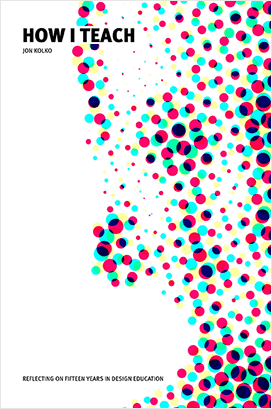
This is from 2010 | 4 minute read
On Education
Recently, an article by Anya Kamenetz, author of DIY U: Edupunks, Edupreneurs, and the Coming Transformation of Higher Education, in which Kamenetz paints a picture of how much education has changed, was featured on the cover of Fast Company. First graders use proprietary software and hardware; curricula self-adjust to the pace of the students; and the massive amounts of content presented on the Internet have democratized—at least on the surface—the challenge of access. We are seeing a fundamental restructuring of delivery mechanisms, and a similarly rich restructuring of content (along with a healthy rejection of the age-old autocratic state content mandates). Yet until quite recently, we hadn't seen the same scale of change in the pedagogy—the instructional styles used to impart knowledge and utilize the delivery mechanisms. And while study after study has rejected rote memorization and the homogenized learning encouraged by No Child Left Behind, alternative models of education are still characterized as "fringe."
In this issue, Dennis Littky offers a provocative new model of K-12 education, one that emphasizes learning by doing, realizes individual differences in learning styles and approaches, and encourages apprenticeship learning over textbook learning. Fundamentally, Littky is arguing for the experiential learning promoted by John Dewey—and this is nearly identical to the process of design research and synthesis described in this issue by Katie Minardo Scott.
The similarities between the process of design and the process of learning in Littky's school are striking, and he's not alone in pursuing a new, designerly approach. His educational model is one of several, which may form a zeitgeist: We may, in fact, be perched on the brink of an educational revolution. And so, I offer a series of predictive recommendations about the evolving nature of education and how to best structure both pedagogy and content to succeed in the coming educational shift:
- Assume that anything is possible. As an educator you quickly become aware of the relative boundaries of your students, and it's easy to set expectations based on these perceived limitations. Traditional teaching models are quick to group students by these segments—usually defined by socio-economic boundaries—and these segments have unusual staying power. The educational revolution to come will operate with the assumption of adequation, where students are empowered to try.
- Understand the "whole student." At all levels of education, the homogenous body of knowledge that is taught en masse has come to mirror the assembly line, with teachers attending to their own laborious task with no awareness of the larger educational context. The educational revolution will empower teachers to support a whole student, realizing that any factual content needs to be positioned in a much larger and broader context.
- Leverage the content democratization afforded by technology. It's almost colloquial to espouse the rich benefits of Internet content, yet in many educational settings, this repository is ignored. Traditional, and highly conservative, textbooks are used, which are neither engaging nor as broad in focus. During the educational revolution, educators will be empowered to draw from a wide assortment of content repositories, sources, and mediums.
- Reject the delivery limitations prescribed by technology. The majority of software intended to support online learning is abysmal. As a result, the experiential qualities of online delivery may suffer for reasons entirely out of the educator's control. During the educational revolution, we'll see educators actively refuse to use subpar products, and we'll witness an increase in hybrid approaches to teaching—models that combine a digital component with in-person, collaborative sessions augmented by traditional tools like whiteboards and Post-it notes.
- Create a safe environment for learning experiences. Perhaps the most important aspect of successful education is the idea of empowerment: creating an environment where failure can be explored, instead of simply trivialized, and where students can learn to be more effective learners. The educational revolution will bring a change of project-based learning, where the cycle of rote memorization, test, and pass/fail is replaced by an iterative approach of informed trial and error.
I've started Austin Center for Design in Austin, Texas, to help drive this revolution; similar programs are creeping up all over the country and the world. Technology is enabling a number of these ideas, but they are fundamentally human. It is interaction design, and behavior, that will act as the driving force behind the educational revolution of the next century.
